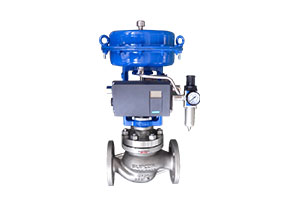Oct. 12, 2020
In the automatic control of modern factories, regulating valves play a very important role. The production of these factories depends on the correct distribution and control of the flowing medium. Whether these controls are energy exchange, pressure reduction, or simple container feeding, certain final control elements are required to complete. The regulating valve plays the role of variable resistance in the pipeline.
Body type
There are many types of valve bodies for regulating valves. Common types of valve bodies include straight-through single-seat, straight-through double-seat, angle, diaphragm, small flow, three-way, eccentric rotation, butterfly, sleeve, spherical, etc.
When making specific choices, consider the following:
(1) Spool shape and structure
It is mainly considered according to the selected flow characteristics and unbalanced force.
(2) Wear resistance
When the fluid medium is a suspension containing a high concentration of abrasive particles, the internal material of the valve should be hard.
(3) Corrosion resistance
As the medium is corrosive, try to choose a valve with a simple structure.
(4) The temperature and pressure of the medium
When the temperature and pressure of the medium are high and the change is large, the valve core and valve seat material should be selected with small temperature and pressure changes. When the temperature is ≥250℃, a radiator should be added.
(5) Prevent flashing and cavitation
Flashing and cavitation only occur in liquid media. In the actual production process, flashing and cavitation will cause vibration and noise, which will shorten the service life of the valve. Therefore, the valve should be prevented from flashing and cavitation when selecting the valve.

Regulating Valve
Control valve actuator
In order for the regulating valve to work normally, the equipped actuator must be able to produce enough output force to ensure a high degree of sealing and valve opening.
For double-acting pneumatic, hydraulic and electric actuators, there is generally no return spring. The magnitude of the force has nothing to do with its running direction. Therefore, the key to selecting an actuator is to understand the maximum output force and the motor's rotational torque. For single-acting pneumatic actuators, the output force is related to the opening of the valve, and the force appearing on the regulating valve will also affect the motion characteristics. Therefore, it is required to establish a force balance across the opening range of the regulating valve.
After determining the output power of the actuator, select the corresponding actuator according to the requirements of the process environment. For explosion-proof requirements on site, pneumatic actuators should be used. From the perspective of energy saving, electric actuators should be used as much as possible. If the adjustment accuracy is high, hydraulic actuators can be selected. Such as the speed adjustment of the transparent machine of the power plant, the temperature adjustment control of the catalytic device reactor of the oil refinery, etc.
The action mode of single seat regulating valve is only available when the pneumatic actuator is selected, and its action mode is formed by the combination of the positive and negative effects of the actuator and the positive and negative effects of the valve. There are 4 types of combinations: positive (air-to-close type), positive and negative (air-to-open type), anyway (air-to-open type), and reverse (air-to-close type). The regulating valve action mode formed by these four combinations has air There are two kinds of on and off.
For the selection of the mode of action of the regulating valve, three main considerations are given:
a) Process production safety;
b) The characteristics of the medium;
c) Guarantee product quality with minimal economic loss.
Headquarter Add.: SUPCON Park, No.309 Liuhe Road, Binjiang District, Hangzhou, 310053, China.
Tel.: +86 571 8111 9774
Fax: +86 571 8111 9737
E-mail: [email protected]
